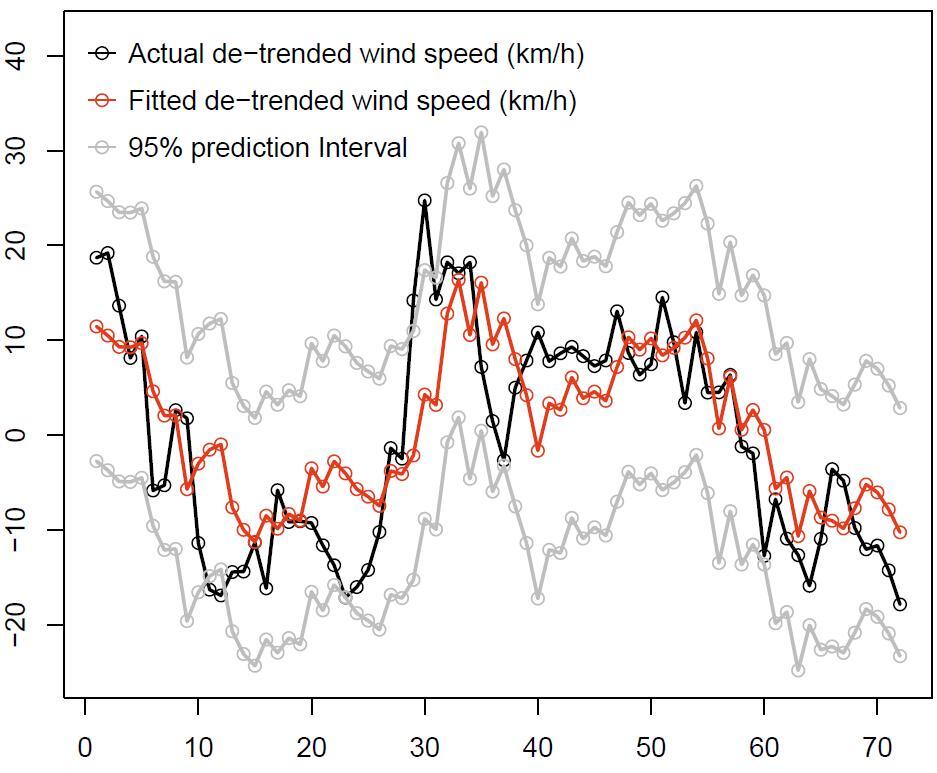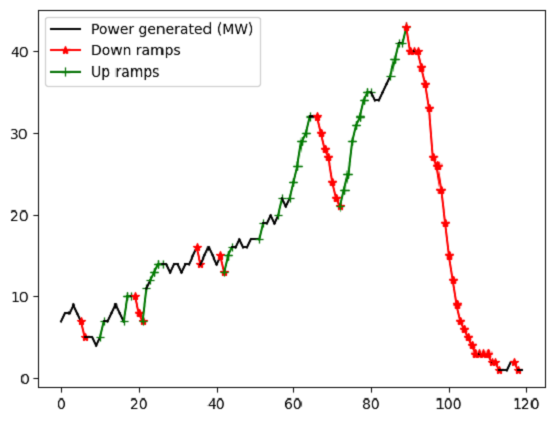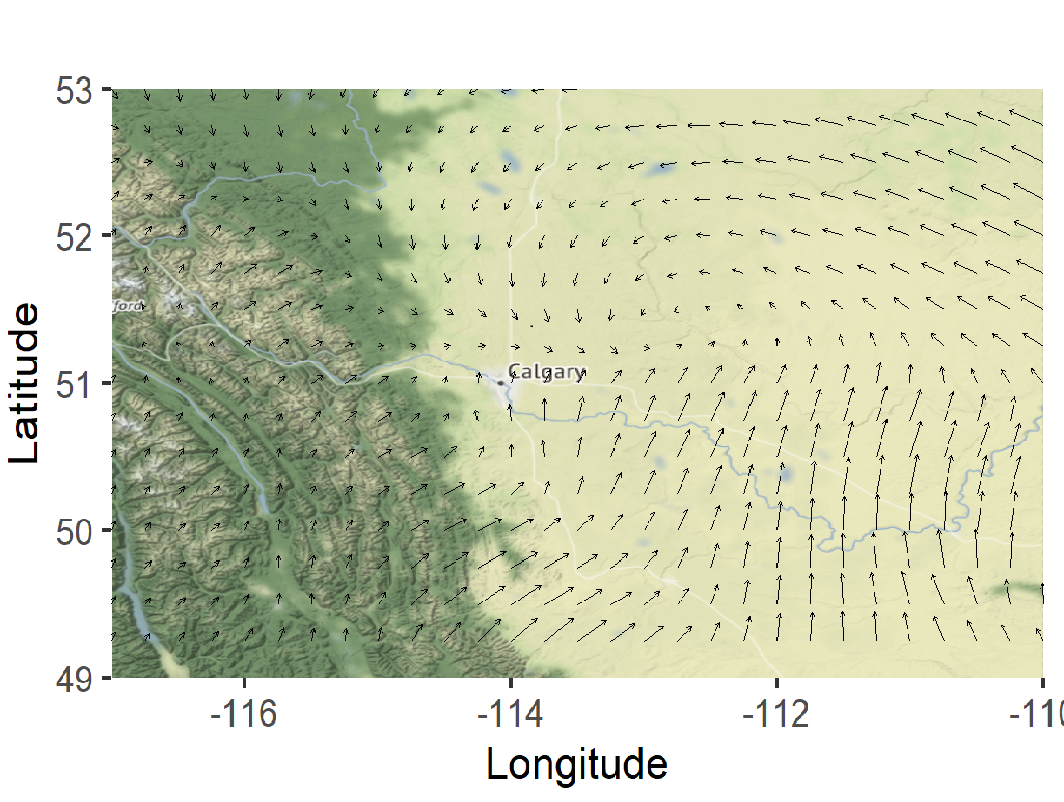Research Team and Projects
Our research team is led by Dr. Deniz Sezer and consists of Ph.D and Masters students from mathematics and statistics.
Deniz Sezer holds a PhD in Operations Research from Cornell University and is currently an Associate Professor in the Department of Mathematics and Statistics at the University of Calgary. Prior to joining the University of Calgary, she was a postdoctoral fellow at York University and the Fields Institute. Her research focuses on probability theory, spatio-temporal processes, and their applications.
Current graduate students and postdocs from the Department of Mathematics and Statistics are actively engaged in renewable energy research.
-
James McCurdy
I am a PhD student in Statistics, and my research primarily involves combing large-scale atmospheric and geographic data to study turbulent fluids. Focusing on the densely populated wind farms of Southern Alberta, we are investigating the relationship between the large scales of turbulence, and the vortices that we see sweep across the prairies. Understanding how these vortices, and other coherent turbulent structures, interact is paramount to our understanding of wind, and will aid in improving our short-term wind forecasts.
-
Shanukie Vithana
I am currently following a program for PhD in Mathematical Finance at the University of Calgary. I received my Bachelor's in Statistics and Computer Science from the University of Kelaniya, Sri Lanka, with first-class honors. In 2019 I started my Master of Science Degree in Financial Mathematics at the University of Colombo and graduated in 2021 (GPA 4.00). My principal area of research is the modelling of electricity prices in markets with renewables employing mean field game models to analyze electricity producers' decisions. I am also interested in spatiotemporal modelling of renewable energy sources with the purpose of supporting and improving the energy system planning process.
-
Souren Iwazian
I am a Master's student in Statistics, and my research focuses on revenue modelling of wind farms in Alberta. Part of my research is joint work with Shanukie Vithana and Dr. Deniz Sezer, where we use a Static Mean Field Game formulation to analyze the impact of policy on renewable energy development. The other part of my research focuses on investment decision making in renewable energy using bi-level programming.
Students who successfully completed their graduate programs with our research group:
- 2024:
- Tylar Jia, PhD
Thesis: Novel Spatio-Temporal Models with Applications in Wind Forecasting. - Maryam Mahmoudi Gharaie, MSc
Thesis: Spatio-Temporal Modelling of Wind Power Ramps in Alberta.
- Tylar Jia, PhD
From other departments of University of Calgary
-
Dr. David Wood
Professor David Wood is the Schulich Chair in Renewable Energy, a director of the Wind Energy Institute of Canada, and an editor for three research journals in renewable energy. His areas of expertise include wind turbine aerodynamics, wind resource assessment, wind farm condition monitoring and renewable energy integration.
-
Dr. Hamid Zareipour
Dr. Hamidreza Zareipour is a Full Professor of Electrical and Software Engineering at the University of Calgary, a Professional Engineer in the Province of Alberta and a Fellow of the IEEE. He works on the operation and planning of power systems in the presence of uncertainty. In particular, he has completed several research projects on forecasting uncertain variables (e.g., electricity market prices, wind and solar power production, load in buildings and micro grids and regional grids), and optimal integration of emerging technologies (e.g., storage, wind and solar) into power grids.
-
Dr. Robert Martinuzzi
Dr. Robert Martinuzzi is professor of fluid mechanics at the Dept. of Mechanical and Manufacturing Engineering at the Schulich School of Engineering. He is a fellow of the ASME and Pratt & Whitney Canada Research Fellow. His research interests include turbulence, aerodynamics, flow control and machine learning, renewable energy (energy harvesting).

Short-term wind forecasting
Accurate short-term wind forecasts are particularly important for Alberta because of the 2-hour-ahead power market. To utilise the large-scale atmospheric information, we consider regime-switching time-series models such as AR/VAR and mixture models for forecasting. Currently we are building novel spatio-temporal covariance models that take into account large-scale atmospheric patterns to predict up to 6-hour ahead wind speed across Alberta. (Investigating graduate student: Tianxia Jia; Supervisor: Dr. Deniz Sezer; Co-supervisor: Dr. David Wood)

Wind power ramp forecasting
We model the frequency and intensity of wind power ramps at multiple locations. Our goal is to find out the dependencies between different sites and the likelihood of simultaneous ramp events. Next, we aim to extend the models to make predictions for future sites by using spatial-temporal processes. In this approach, the probability of a simultaneous ramp event at two sites can be related to the geographic distance between them, hence making it more likely for nearby sites to have simultaneous ramps. (Investigating graduate student: Maryam Mahmoudi Gharaie; Supervisor: Dr. Deniz Sezer; Co-supervisor: Dr. Hamidreza Zareipour)
Stochastic modelling of electricity price in electricity markets with renewables
We aim to develop game theoretic approaches to model the electricity market where
agents are electricity suppliers (renewable or conventional or both), each seeking to maximize their
utility by taking certain actions. We explore models where the interaction between each agent
exists only via the spot price of electricity which is determined by demand and the merit order of supply bids. We are currently studying optimal siting of a wind farm using a mean field game approach. (Investigating graduate student: Shanukie Vithana; Supervisor: Dr. Deniz Sezer)

A snapshot of a vortex in Alberta (data: ERA5)
Sub-meso features of the wind flow and their interaction with the large scale dynamics.
Focusing on the densely populated wind farms of Southern Alberta, we are investigating the relationship between the large scales of turbulence, and the vortices that we see sweep across the prairies. Understanding how these vortices and other coherent turbulent structures interact is paramount to our understanding of wind, and will aid in improving our short-term wind forecasts. (Investigating graduate student: James McCurdy; Supervisor: Dr. Deniz Sezer; Co-supervisor: Dr. Robert Martinuzzi)
